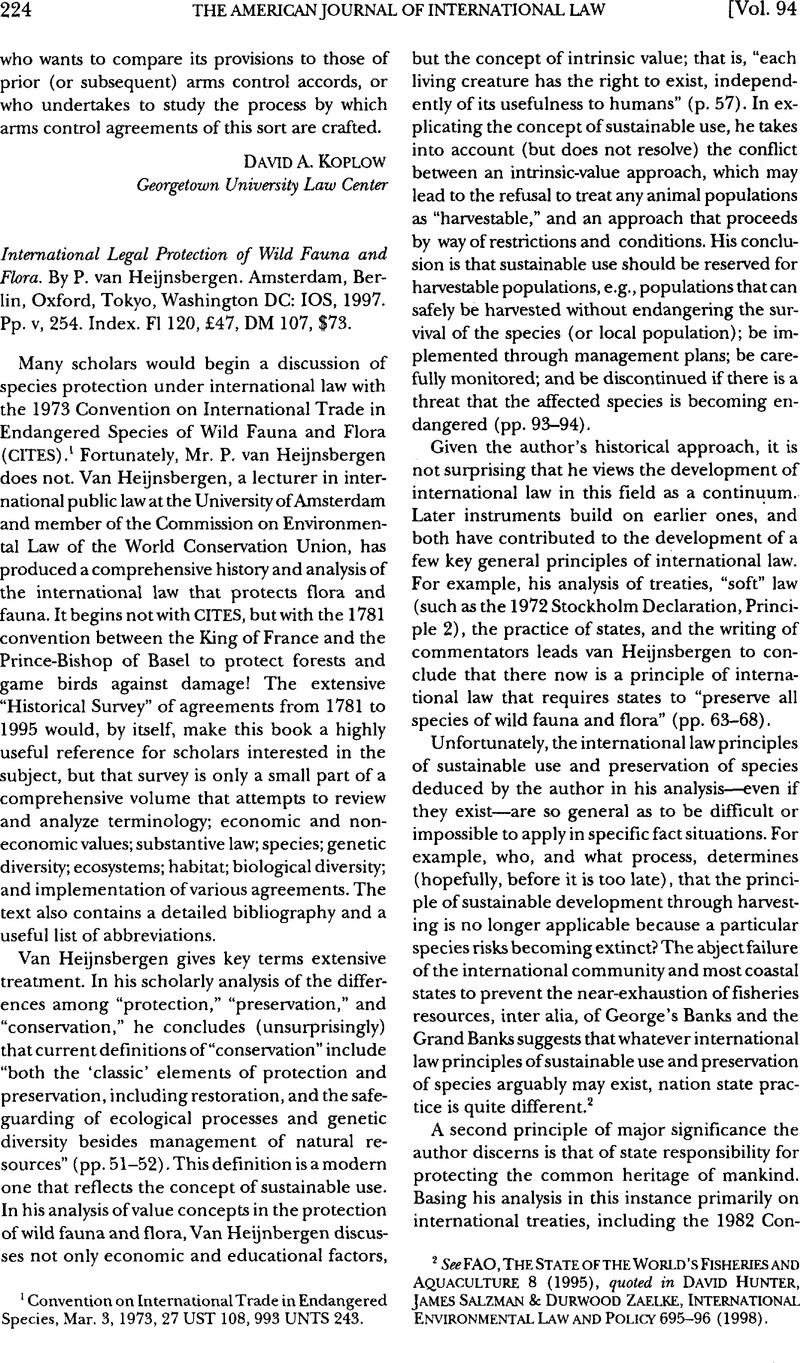No CrossRef data available.
Published online by Cambridge University Press: 27 February 2017

1 Convention on International Trade in Endangered Species, Mar. 3, 1973, 27 UST 108, 993 UNTS 243.
2 See FAO, The State of the World's Fisheries and Aquaculture 8 (1995), quoted in David Hunter, James Salzman & Durwood Zaelke, International Environmental Law and Policy 695–96 (1998).
3 In part because the United States wished to avoid having the deep-seabed mining regime become a precedent; see Bernard H. Oxman, The 1994 Agreement and the Convention [on the Law of the Sea], 88 AJIL 687, 688–89 (1994).
4 See David Favre, Debate Within the CITES Community: What Direction far the Future, 33 Nat. Resources J. 875, 876–99 (1993).
5 See, e.g., Michael Glennon, Has International Law Failed the Elephant, 84 AJIL 1, 41–42 (1990) (criticizing the lack of power given to the CITES secretariat to impose provisional bans to protect endangered species, even subject to later approval by the conference of the parties).
6 Don Barry, Statement to Explain the United States Vote on Elephants (July 9, 1997), 1997 WL 11938456, at 2.
7 CITES, supra note 1, Art. XVII.
8 Understanding on Rules and Procedures Governing the Settlement of Disputes, Apr. 15,1994, Final Act Embodying the Results of the Uruguay Round of Multilateral Trade Negotiations, Annex II, Legal Instruments—Results of the Uruguay Round vol. 1 (1994), 33 ILM 1226 (1994) [hereinafter DSU]. Under the DSU, member states that have lost decisions have the option of complying with a decision by changing the offending law or regulation, or paying compensation by agreement or through suspension of trade benefits. DSU, supra, Arts. 19, 22.
9 See United States—Import Prohibition of Certain Shrimp and Shrimp Products (WT/DS58, 1996), in which the Appellate Body confirmed that a U.S. import ban on shrimp caught with fishing methods that were unsafe for sea turtles was a violation of Article XI, para. 1, ofthe GATT 1994. No conOict between GATT principles and the trade-restrictive provisions of a widely ratified international environmental agreement such as the CITES has yet reached the WTO's Dispute Settlement Body.